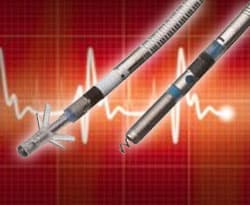
People relying on the Riata and Riata ST models of cardiac defibrillator leads face a dangerous and life-threatening dilemma: should they choose to have the fault-prone and recalled medical devices removed in place of a different, safer model; or do they trust that its defects won’t harm them as they have for hundreds of others, […]
 People relying on the Riata and Riata ST models of cardiac defibrillator leads face a dangerous and life-threatening dilemma: should they choose to have the fault-prone and recalled medical devices removed in place of a different, safer model; or do they trust that its defects won’t harm them as they have for hundreds of others, including at least 22 people who’ve suffered fatal injuries?
People relying on the Riata and Riata ST models of cardiac defibrillator leads face a dangerous and life-threatening dilemma: should they choose to have the fault-prone and recalled medical devices removed in place of a different, safer model; or do they trust that its defects won’t harm them as they have for hundreds of others, including at least 22 people who’ve suffered fatal injuries?
According to a Wall Street Journal report over the weekend, more and more patients and their surgeons are realizing that the risks involved with removing the potentially faulty Riata and Riata ST leads are not as grave as waiting and worrying for them to fail. Since questions have been raised on the safety of the Riata and Riata ST, even those still functioning properly to maintain a recipient’s heart rhythm and rate, surgeons and patients around the world face the same dilemma but now some hospitals and surgeons are taking a proactive but risky approach.
At facilities like Vanderbilt University Medical Center, Brigham and Women’s Hospital, and Minneapolis Heart Institute, surgeons there have begun suggesting to patients to have their Riata and Riata ST leads removed, even if they’re functioning properly. The worst, they fear, could only be a matter of time.
At least 79,000 people in the U.S. were outfitted with a Riata cardiac defibrillator lead. The leads connect from an implanted defibrillator to the heart. Problems with these leads occur when their connective ends break from a silicone housing designed to protect that end and the patient from an unwarranted shock. Even though a connective end may have broken from its protection, the Riata leads have still been proven effective and functioning but not likely to be safe. They could however, malfunction at any time and present a life-threatening situation for someone relying on it for their next heart beat. Herein presents the dilemma: The procedure to remove the leads is dangerous in its own right but is it more dangerous than keeping the leads that could malfunction without warning?
While the Food and Drug Administration (FDA) and the makers of the Riata line of leads, St. Jude Medical, debate the most effective treatment plan going forward, more patients are opting to have them removed. Facing the possibility of a broken piece of the lead being left in the body or of damaging heart tissue, surgery to remove the leads seems the more favorable option over waiting for the devices to fail unexpectedly.
St. Jude, according to the report, is expected to release the results of its own study in June on the best methods for treating patients who still rely on the defective leads. St. Jude stopped selling the Riata and Riata ST leads in 2010 and have since replaced them with new wires that have a more protective coating on their connective ends. The medical device maker has conducted a review of more than 700 patients with the leads implanted and its recommendations will deal with patients who’ve already experienced the leads breaking free of the housing and those who’ve experienced no flaws to date.
A surgeon at Vanderbilt University told Wall Street Journal that although the hospital’s approach is “aggressive” and does present some serious risks, the facility feels it is safer than the risks posed by the defective leads, even if they haven’t malfunctioned just yet.


